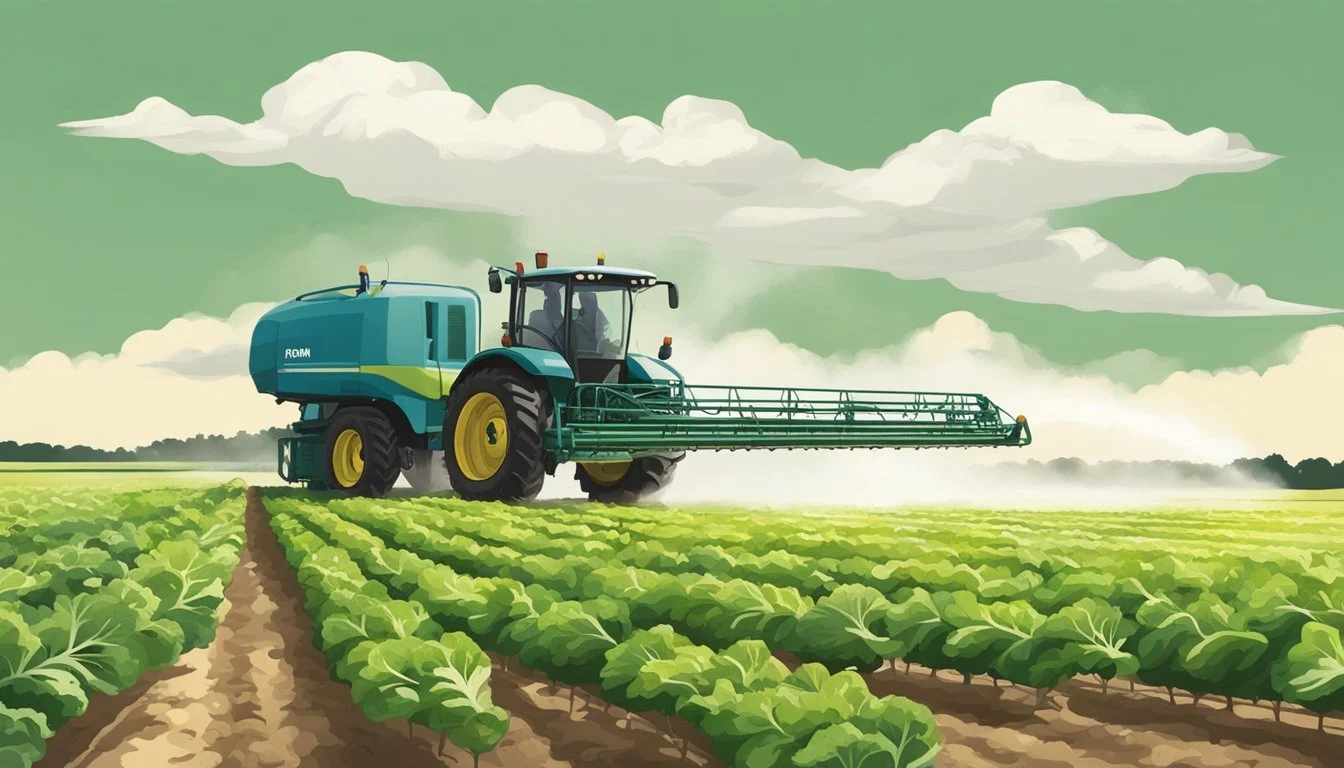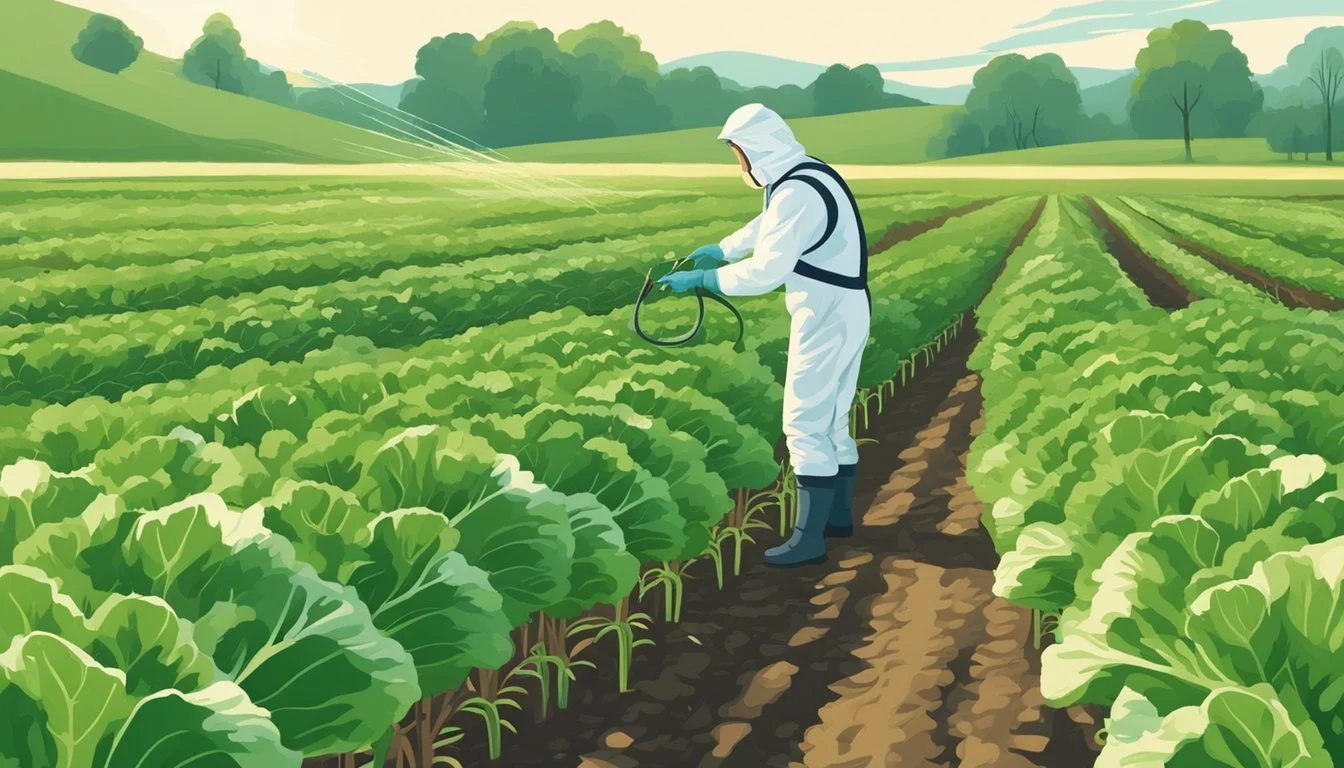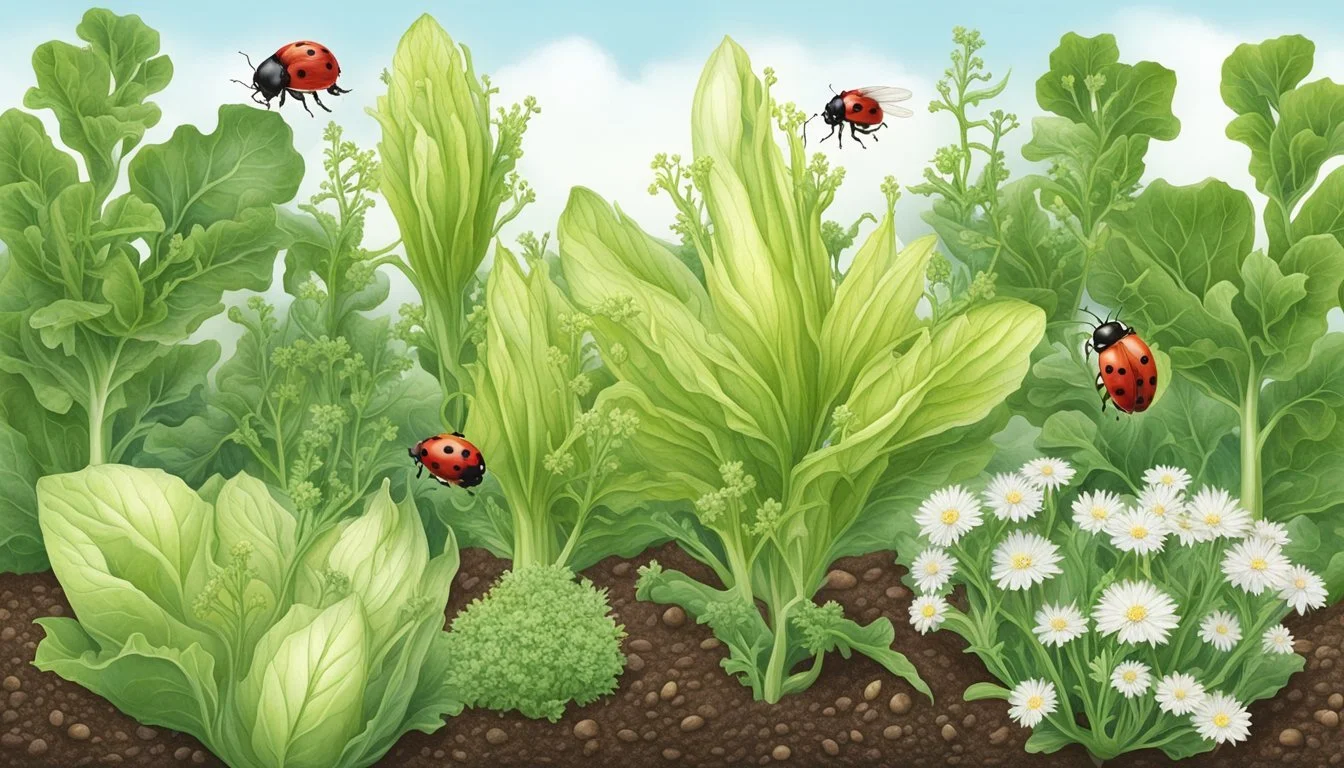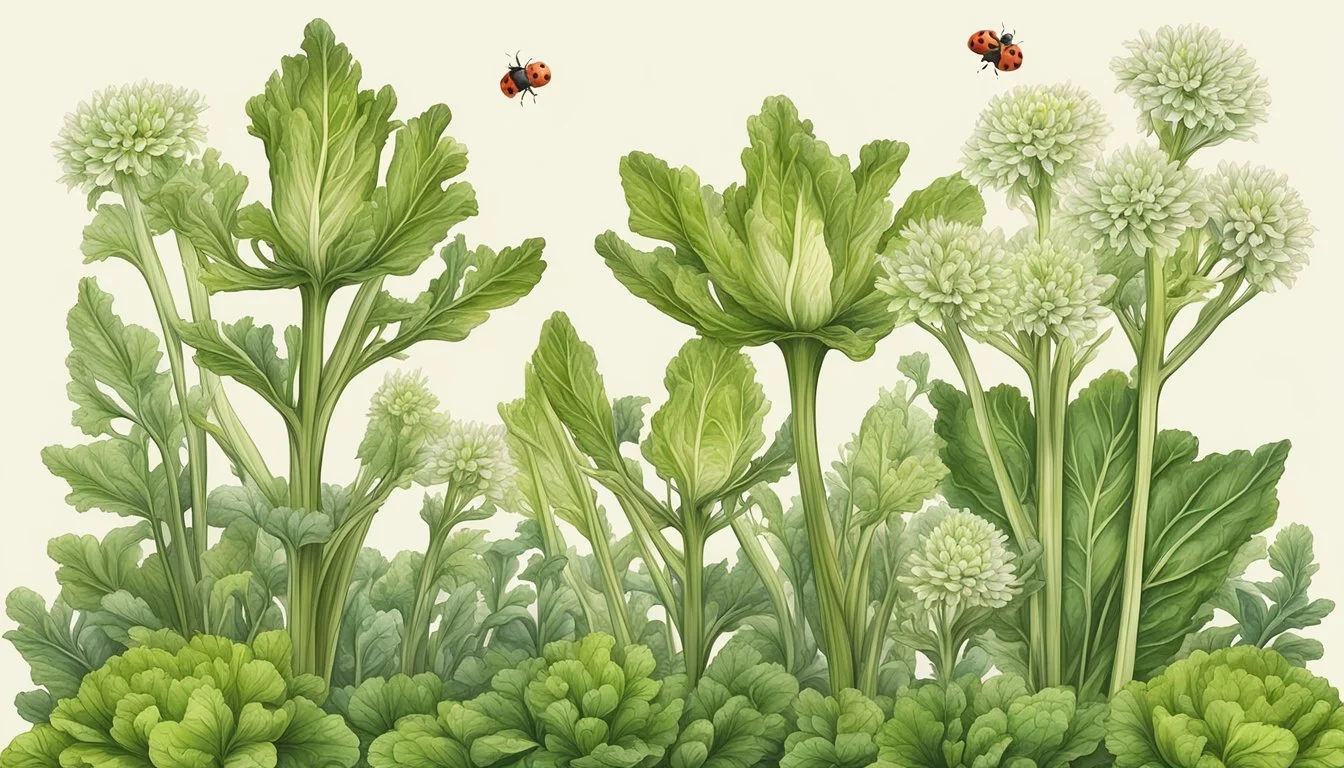Pest Control for Endive
Effective Strategies for Healthy Growth
Endive, a leafy green vegetable cherished for its crisp texture and slightly bitter flavor, is a popular salad ingredient often grown for both personal use and commercial purposes. Despite its hardy nature, endive is susceptible to various pests that can compromise plant health and yield. Efficient pest control strategies are essential to ensuring a healthy crop. Utilizing organic pest control methods such as neem oil or insecticidal soap can be effective at protecting endive plants while preserving beneficial insects, which are vital for maintaining the ecological balance in a garden.
Achieving success in endive cultivation involves a combination of preventive measures and timely interventions. Cool temperatures and short days are ideal for endive growth, suggesting that planting schedules should be carefully planned to avoid peak pest seasons. Thinning the plants to the appropriate spacing ensures adequate air circulation, which can reduce the likelihood of pest infestation and disease. For gardeners aiming for an extra-early crop, starting seeds indoors can be advantageous, moving them outside when conditions are more favorable.
Regular monitoring of endive plants allows gardeners to identify pest problems early and respond promptly. By applying the right control measures at the first sign of an issue, it's possible to keep endive crops thriving without resorting to harsh chemical pesticides. This approach not only contributes to the health of the plants but also supports sustainability within the ecosystem, providing a clean and wholesome product for consumers.
History and Botanical Profils
Endive, a member of the chicory family, has a rich history and diverse botanical profile that features various species and forms cultivated across Europe and in the Mediterranean region. The plant is recognized for its culinary and medicinal uses since ancient times.
Origins and Species Diversity
The cultivation of endive dates back to ancient civilizations, with the Egyptians pioneering its use. This leafy green vegetable, also known for its close relation to chicory, thrives in the Mediterranean and has since spread throughout Europe, where different varieties have been developed, including types like witloof and Belgian endive. Key species in this group include Cichorium endivia and Cichorium intybus.
Cichorium endivia—often cultivated for its edible leaves.
Cichorium intybus—includes varieties such as radicchio, puntarelle, and Belgian endive (witloof).
Scientific Classification
Endive belongs to a broader botanical classification within the plant kingdom. Here is a brief overview of its scientific taxonomy:
Taxonomic Rank Name Kingdom Plantae Order Asterales Family Asteraceae Genus Cichorium Species Cichorium endivia
With these classifications, endive is firmly placed within the chicory family, a group that is characterized by a bitter taste and is widely appreciated in salads and various culinary applications.
Cultivation Techniques
To maximize endive yield and health, adhering to proper cultivation techniques is essential. These techniques encompass specific growing conditions, soil requirements, and careful planting and maintenance schedules that are conducive to the plant's development and pest resistance.
Growing Conditions
Endive thrives in cool temperatures and can be grown effectively as a cool-season crop. Varieties of endive such as frisée or escarole benefit from short days and consistent cool climates to develop their characteristic flavors and textures.
Soil Requirements
The plant requires well-draining soil enriched with organic matter. A soil pH between 6.0 and 7.8 is ideal, depending on the variety. It is crucial to perform a soil test before planting and to incorporate compost as needed to achieve a fertile growing environment.
Planting Seeds and Seedlings
Seeds should be sown directly at a depth of ¼-inch in rows spaced 18 inches apart, or started indoors in a potting mix for extra-early crops. After sowing, it is important to thin out seedlings to a spacing of 8 to 12 inches to allow adequate room for growth.
Watering and Irrigation
Endive's watering needs are moderate but consistent. The plant benefits from a water-retentive soil that can maintain moisture without becoming waterlogged. Employing a drip irrigation system can help provide steady moisture and reduce the spread of disease.
Sunlight and Temperature
Endive plants prefer full sun to partial shade, with optimal growth observed in conditions of 6 hours of direct sunlight per day. While endive can handle some warmth, it is most productive when daytime temperatures are between 60-65 degrees Fahrenheit (15-18 degrees Celsius).
In following these cultivation techniques, gardeners and commercial growers alike can ensure a robust endive crop ready for harvesting at the appropriate time, typically before the onset of the last frost date to prevent bolting and to maintain the best flavor and texture.
Pest and Disease Management
Effective management of pests and diseases in endive cultivation is pivotal for ensuring healthy crop yields. Employing strategies to prevent and control infestations and infections can profoundly influence the quality and quantity of endive production.
Common Pests
Endive crops attract various insects, but some of the most detrimental include aphids, slugs, and snails. Aphids are small sap-sucking insects that can cause significant damage by transmitting viruses and promoting sooty mold growth. Slugs and snails, on the other hand, feed on the tender leaves, leaving behind irregular holes and large swathes of destruction. Regular monitoring and physical removal, when populations are low, can effectively reduce pest numbers.
Disease Prevention
Preventing disease in endive crops largely relates to good cultural practices. It involves the sanitation of the field, such as removing plant debris that can harbor pathogens, alongside crop rotation to prevent soil-borne diseases like Microdochium panattonianum, the cause of downy mildew. Ensuring proper air circulation and avoiding excess irrigation can reduce the risk of disease establishment and spread.
Organic Pest Control Methods
For organic producers or those who prefer non-chemical methods, neem oil serves as a potent natural pesticide, particularly against aphids. Beneficial insects like ladybugs and lacewings can be introduced to the ecosystem to prey on aphids, enhancing biological control. Furthermore, barriers and traps can be effective defenses against slugs and snails.
Integrated Pest Management
Integrated Pest Management (IPM) emphasizes the importance of combining biological, cultural, mechanical, and chemical approaches for sustainable pest and disease control. This strategy could involve monitoring pest populations, using pheromone traps for early detection, and applying chemical controls as a last resort. The goal of IPM is to reduce reliance on chemicals while maintaining control over pest and disease levels within economically acceptable bounds.
Harvesting and Post-Harvest Care
When harvesting endive, it is crucial to use the right techniques to ensure optimal flavor and freshness. Careful handling post-harvest can prevent the bitter taste common in endive due to bolting or improper storage.
Harvesting Techniques
Timing: Endive is best harvested in the late spring or early summer when the leaves are two to three inches long or when a firm head has formed.
Method: Utilize a sharp knife to cut the endive at or just above the soil surface. When clipping, be gentle to avoid bruising the leaves, which can impact the flavor.
Signs of Maturity: Look for a solid head and a full cluster of mature leaves as indicators that the endive is ready to harvest.
Storing for Freshness
Temperature: Store endive at 0°C (32°F) to extend its freshness.
Humidity: Maintain high humidity of 95 to 100% in your storage area.
Container: Use perforated plastic bags to allow for airflow while keeping the endive moist.
Preventing Bolting and Bitterness
Cultivation: Choose varieties that are less prone to bolting, especially if growing in warmer climates.
Shade: Provide light shade to protect the endive from heat, which can trigger bolting and a bitter flavor.
Harvest Time: Harvest endive in the morning when the plant is most turgid, as heat later in the day can induce bitterness in the leaves.
Culinary Uses and Nutrition
Endive, a leafy vegetable with a slightly bitter taste, is revered for its versatility in the kitchen and notable nutrition profile. It's commonly used in salads and as a component in various cooked dishes, offering a unique flavor and a host of health benefits.
Preparation Techniques
Endive can be prepared using a variety of techniques to enhance its flavor and texture. One method is to blanch it by submerging the leaves in boiling water for a brief period, then immediately transferring them to ice water. This process can help reduce the bitterness. Alternatively, endive can be grilled or braised to add a charred or tender dimension to its texture, perfect for incorporating into stir-fries or other savory dishes.
Health Benefits
This salad green is more than just a culinary delight; it is packed with essential nutrients. A serving of endive is high in fiber and low in calories, making it an ideal choice for weight management. It also provides a good amount of vitamins A, C, and E, which are crucial for maintaining healthy skin and immune system. Additionally, endive contains inulin, a type of carbohydrate that may stimulate appetite control.
Culinary Pairings
Endive's unique flavor profile makes it suitable for a diverse range of culinary pairings. It pairs well with fruity vinaigrettes in salads, offering a contrasting taste to sweet and tangy dressings. In cooked dishes, it complements rich meats like pork or fish, providing a refreshing crunch and balancing the overall flavors. The slightly bitter taste of endive also works well with nuts and cheeses, making it a sophisticated addition to appetizer plates.
Endive in Home Gardening
Cultivating endive in a home garden setting is an approachable task that allows gardeners to enjoy fresh, leafy greens. Key factors such as container choices, soil management, and adapting to local climate conditions are essential for a bountiful crop.
Container and Raised Bed Options
Endive can thrive in containers and raised beds, making it a versatile choice for gardeners with limited space. For successful growth:
Choose pots at least 6 inches deep to accommodate root growth.
Ensure adequate drainage holes to prevent waterlogging.
Raised beds should be 12-18 inches high for optimal root development and ease of maintenance.
Soil and Composting
A well-draining, fertile soil is crucial for endive cultivation. Incorporate these considerations for soil preparation:
Amend the soil with compost or aged manure to enrich and improve structure.
Aim for a pH level between 6.0 and 7.0.
Maintain consistent moisture without overwatering to encourage steady growth and prevent bitter leaves.
Successfully Growing in Various Climates
Endive prefers cool temperatures and can be grown in a variety of climates with some adjustments:
In warmer climates, ensure plants receive partial shade to protect from intense heat.
Cooler regions may require starting seeds indoors or using a cold frame to extend the growing season.
Monitor humidity levels; excess humidity can promote disease, while too little can stress plants.
By finding the right container or dedicated space in the garden, ensuring soil is rich and fertile, and accounting for the local climate and light conditions, endive becomes a manageable and rewarding plant for home gardeners to grow. Regular weeding and monitoring for pests will further protect the plants and contribute to their success.
Endive Varieties and Their Characteristics
Endive, a popular salad green known for its crisp texture and distinct flavor, comes in a range of varieties each suited to specific growing conditions and culinary uses.
Selection of Endive Varieties
Different varieties of endive are selected based on their appearance, flavor, and growth habit. The two primary types include:
Curly Endive (Cichorium endivia var. crispum): Recognized by its frilly, curly edges and slightly bitter taste, this variety adds texture to salads.
Broad-leaved Endive (Cichorium endivia var. latifolia): Also known as escarole, it has wider, flatter leaves and a milder flavor which makes it versatile in cooking.
When selecting a variety to grow, gardeners consider the plant's mature height and spread, which typically ranges from 10 to 25 cm (3.9-9.8 inches) in height, and choose a variety that best fits their space and culinary preferences.
Specific Cultivation Practices for Different Varieties
Each variety of endive has particular cultivation needs:
Curly Endive: Prefers cooler temperatures and can tolerate partial shade, but still requires approximately 6 hours of light per day. Its unique leaves can become even curlier when properly blanched.
Broad-leaved Endive: Thrives in well-drained soil with a pH level of 6.0-6.8 and needs full sunlight to develop its full flavor profile.
By understanding these specific requirements, gardeners can ensure a successful harvest of this flavorful salad green.
Advanced Topics in Endive Cultivation
Exploring advanced techniques in endive cultivation can lead to significant improvements in both flavor and plant resilience. These strategies involve meticulous control over growing conditions and a scientific approach towards plant breeding.
Maximizing Flavor Through Blanching
Blanching is a traditional technique used to reduce the bitter flavor commonly associated with endive. By restricting light exposure during the final weeks before harvesting, chlorophyll production is limited, resulting in a milder taste. A common method entails covering the plants with opaque materials or soil, effectively shielding them from sunlight for 10-14 days. This practice also tends to give the leaves a paler, more appealing color that is highly valued in culinary uses.
Genetic Improvement and Seed Development
Advancements in genetic improvement focus on creating endive varieties with enhanced traits such as disease resistance and optimized flavor profile. Researchers select seeds that demonstrate desirable characteristics and use these as the foundation for developing new generations of endive with targeted qualities. Through careful cultivation and seed selection, varietals better suited for withstanding temperatures slightly below freezing such as a light frost are developed, thus extending the growing season and geographical adaptability of the crop. Furthermore, understanding the ideal soil pH levels, which range from 6.0 to 6.8, is integral to the successful development of these robust endive seeds.
Frequently Asked Questions
In managing endive crops, gardeners commonly inquire about effective pest control strategies and safe pesticide use. This section addresses those concerns through a series of targeted questions.
What is the most effective pest management strategy for endive plants?
The most effective pest management strategy for endive involves regular monitoring and timely intervention using integrated pest management techniques, combining physical, biological, and chemical controls.
What are common pests that affect endive leaves and how can they be controlled?
Common pests that target endive leaves include aphids, slugs, and caterpillars. Control measures include hand picking, setting up barriers, and applying organic pest controls like neem oil or insecticidal soap to minimize damage without harming beneficial insects.
Which natural pest control methods work best for protecting endive crops?
Natural pest control methods like the use of beneficial insects, neem oil, and insecticidal soaps are proven to be effective in protecting endive crops from common pests.
How can you prevent common endive pests in a home garden?
Preventing common endive pests in a home garden is achievable by practicing crop rotation, encouraging predatory species, and maintaining healthy soil for strong plant growth that is less susceptible to pest infestations.
Could you list preventative measures to protect endives from common garden pests?
Preventative measures for protecting endives include using floating row covers, keeping the garden free of debris, and watering in a manner that keeps the foliage dry to deter pests.
What chemical pesticides are recommended for use on endives, and are they safe?
When choosing chemical pesticides for endives, it is essential to select products labeled for use on edible crops and to follow the manufacturer’s instructions carefully to ensure safety for both the crop and the consumer.










